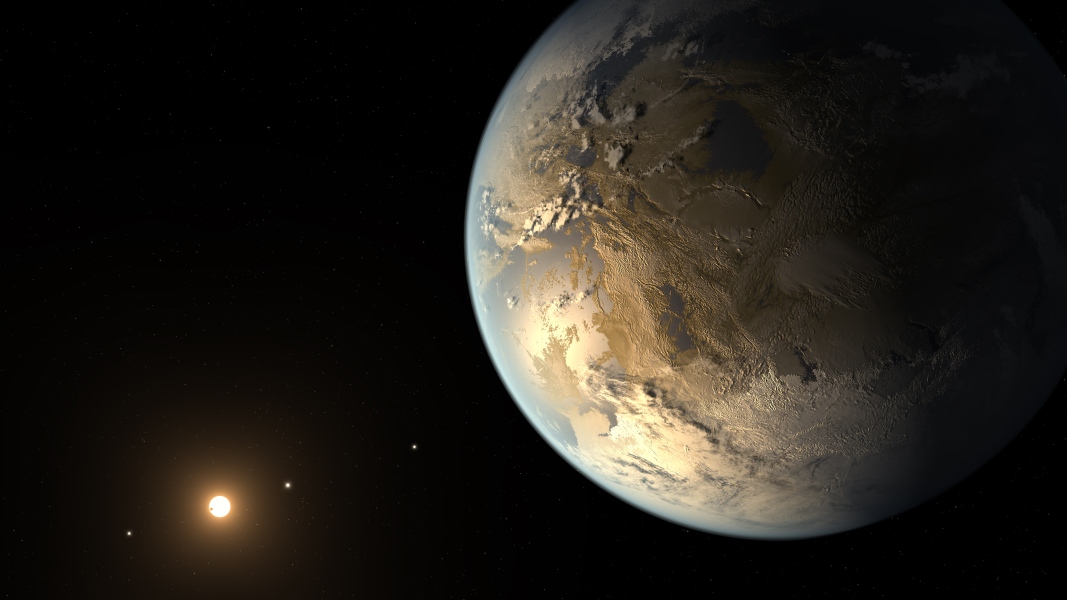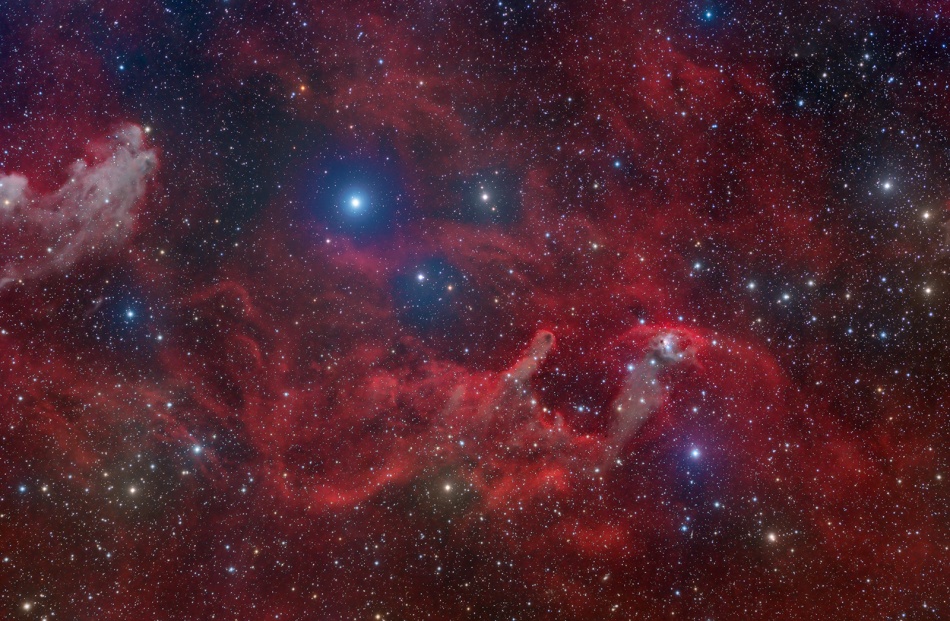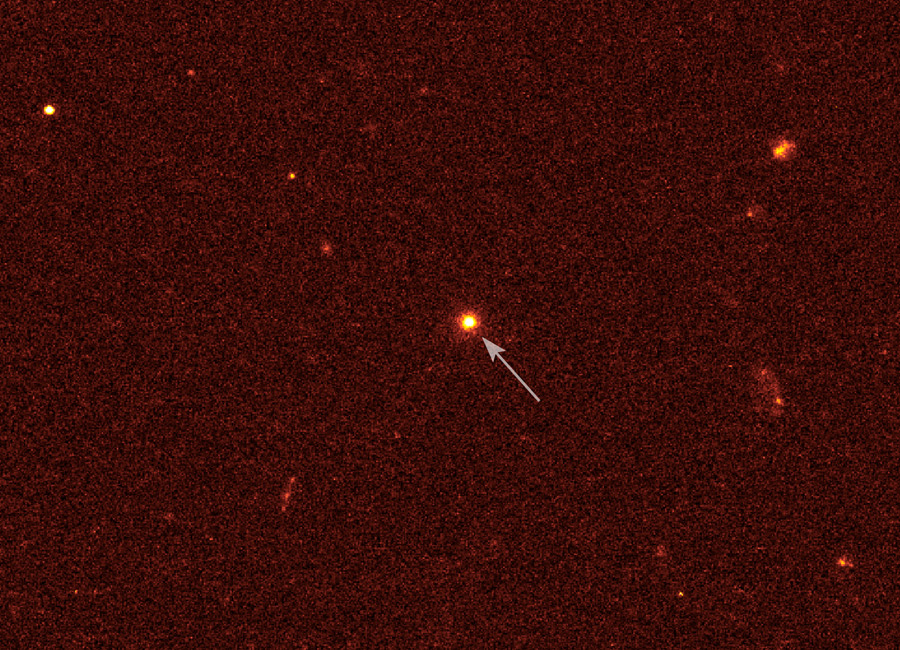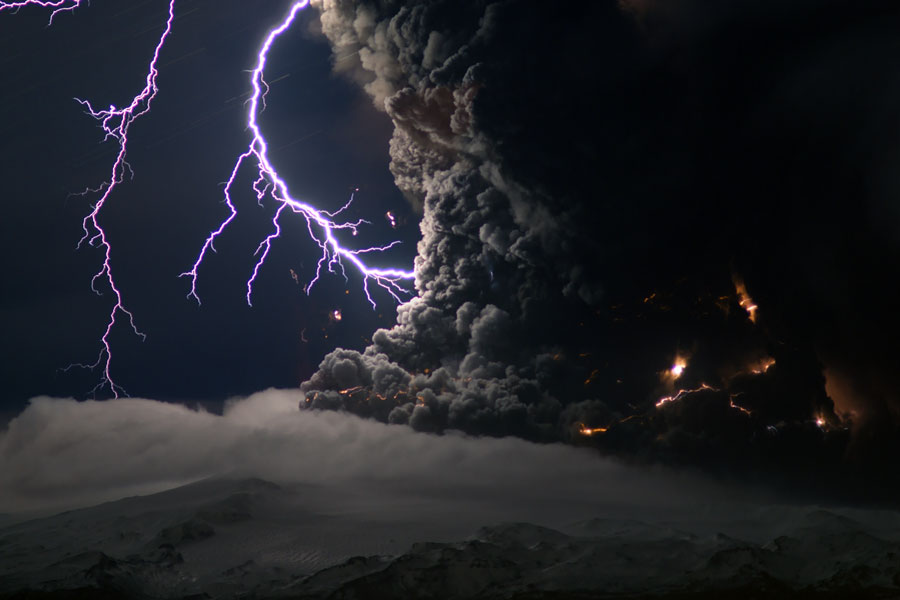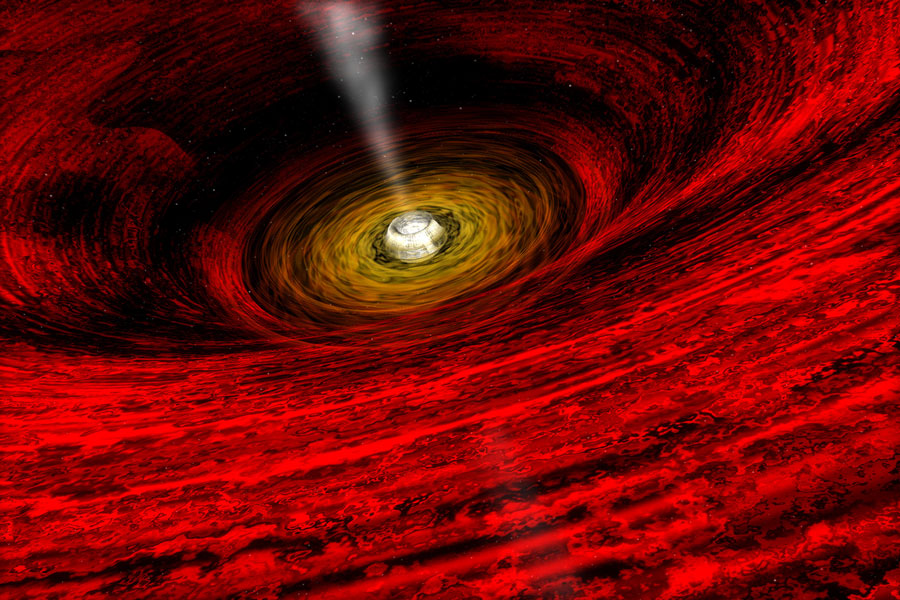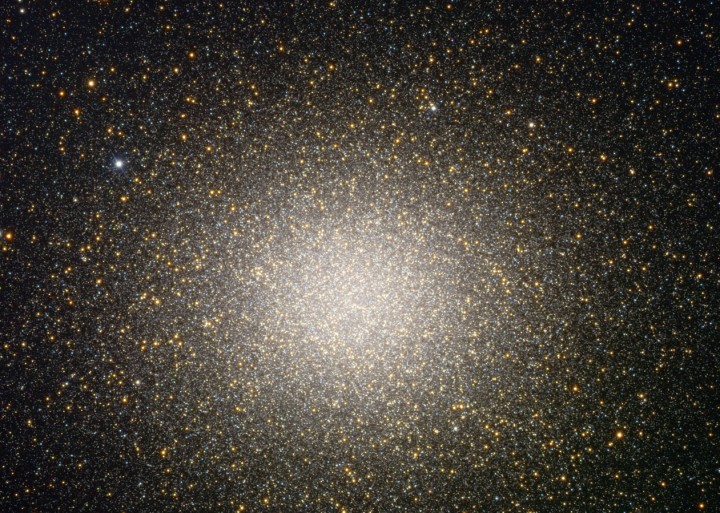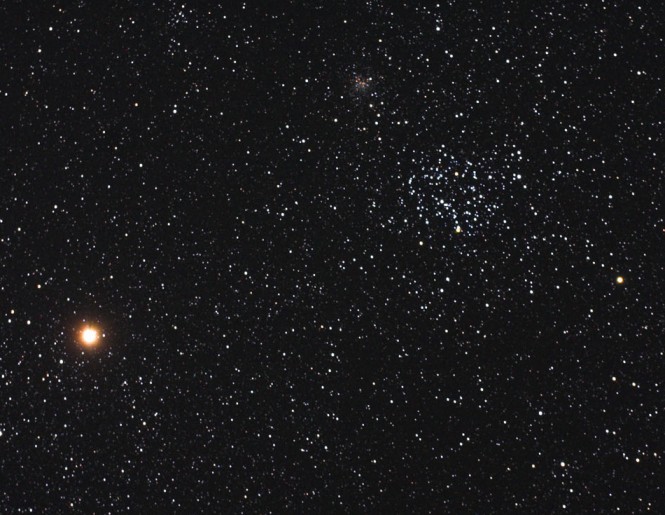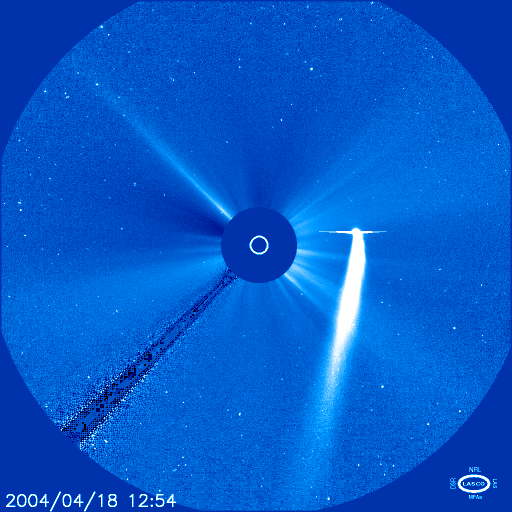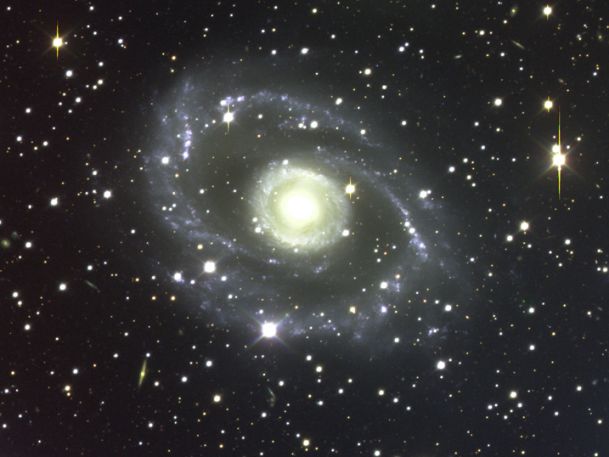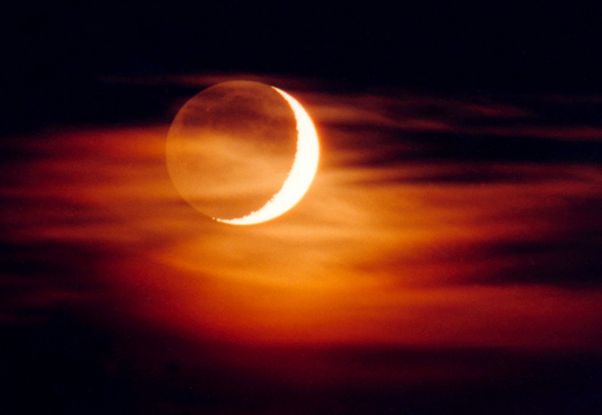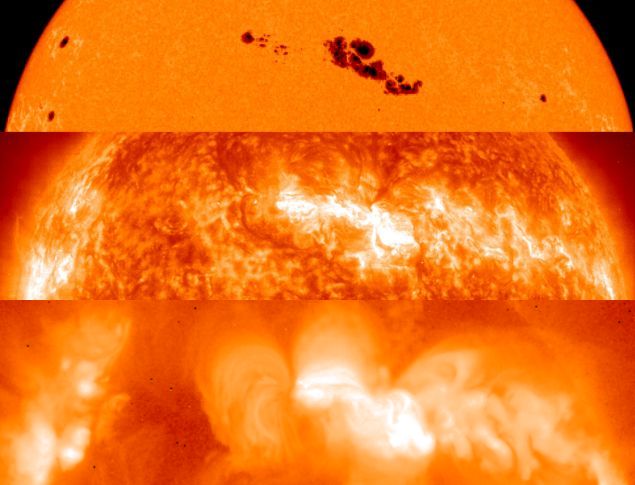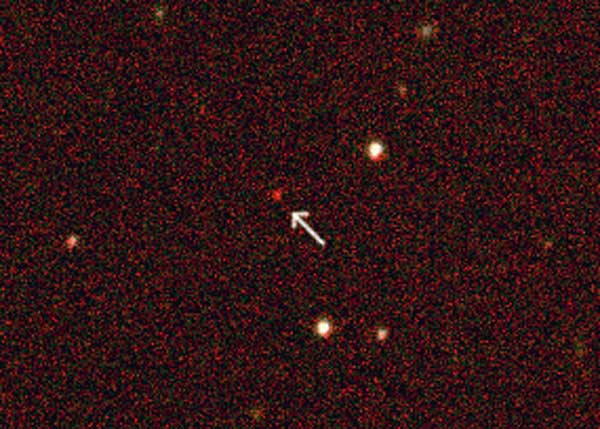| << Previous | Index | Next >> |
2015 How could a galaxy become shaped like a ring? The rim of the blue galaxy pictured on the right is an immense ring-like structure 150,000 light years in diameter composed of newly formed, extremely bright, massive stars. That galaxy, AM 0644-741, is known as a ring galaxy and was caused by an immense galaxy collision. When galaxies collide, they pass through each other -- their individual stars rarely come into contact. The ring-like shape is the result of the gravitational disruption caused by an entire small intruder galaxy passing through a large one. When this happens, interstellar gas and dust become condensed, causing a wave of star formation to move out from the impact point like a ripple across the surface of a pond. The intruder galaxy is just outside of the frame taken by the Hubble Space Telescope. This featured image was taken to commemorate the anniversary of Hubble's launch in 1990. Ring galaxy AM 0644-741 lies about 300 million light years away.
2014 Planet Kepler-186f is the first known Earth-size planet to lie within the habitable zone of a star beyond the Sun. Discovered using data from the prolific planet-hunting Kepler spacecraft, the distant world orbits its parent star, a cool, dim, M dwarf star about half the size and mass of the Sun, some 500 light-years away in the constellation Cygnus. M dwarfs are common, making up about 70 percent of the stars in our Milky Way galaxy. To be within the habitable zone, where surface temperatures allowing liquid water are possible, Kepler-186f orbits close, within 53 million kilometers (about the Mercury-Sun distance) of the M dwarf star, once every 130 days. Four other planets are known in the distant system. All four are only a little larger than Earth and in much closer orbits, also illustrated in the tantalizing artist's vision. While the size and orbit of Kepler-186f are known, its mass and composition are not, and can't be determined by Kepler's transit technique. Still, models suggest that it could be rocky and have an atmosphere, making it potentially the most Earth-like exoplanet discovered so far ...
2013 This skyscape finds an esthetic balance of interstellar dust and gas residing in the suburbs of the nebula rich constellation of Orion. Reflecting the light of bright star Rigel, Beta Orionis, the jutting, bluish chin of the Witch Head Nebula is at the upper left. Whiskers tracing the red glow of hydrogen gas ionized by ultraviolet starlight seem to connect that infamous visage with smaller nebulae, like dusty reflection nebula NGC 1788 at the right. Strong winds from Orion's bright stars have also shaped NGC 1788, and likely triggered the formation of the young stars within. Appropriate for its location, NGC 1788 looks to some like a cosmic bat. The scene spans about 3 degrees on the sky or 6 full Moons.
2012 Climbing into cloudy skies, the Space Shuttle Orbiter Discovery (OV-103) took off from Kennedy Space Center Tuesday at 7 am local time. This time, its final departure from KSC, it rode atop a modified Boeing 747 Shuttle Carrier Aircraft. Following a farewell flyover of the Space Coast, Goddard Space Flight Center, and Washington DC, Discovery headed for Dulles International Airport in Virginia, destined to reside at the Smithsonian's National Air and Space Museum Udvar-Hazy Center. Discovery retires as NASA's most traveled shuttle orbiter, covering more than 148 million miles in 39 missions that included the delivery of the Hubble Space Telescope to orbit. Operational from 1984 through 2011, Discovery spent a total of one year in space.
2011 A symphony of planet-wide observations began abruptly on March 28 when the Earth-orbiting Swift satellite detected a burst of high-frequency gamma-rays from GRB 110328A. When the same source flared again after a 45 minute pause it was clear this event was not a typical gamma-ray burst. Twelve hours after the initial fanfare astronomers using the 2.5-meter Nordic Optical Telescope chimed in with a mid-range observation of the optical counterpart. Early the next day the explosion was picked up in baritone low-frequencies of radio waves by the EVLA radio dishes in the USA. Later many optical telescopes, including the 8-meter Gemini North telescope in Hawaii, began playing along by tracking the optical counterpart. The unusual source was spotted at a higher register in X-rays by the Chandra X-ray Observatory and was intermittently followed in the even more soprano-like gamma-ray range for a week. Joining the chorus, Hubble Space Telescope recorded this image in optical and infrared light, confirming that the flash was located along the path of a galaxy at redshift 0.351. If associated with the galaxy, this explosion occurred when the universe was about two thirds of its present age. There is much speculation that the unusual gamma-ray burst was a star being ripped apart by a supermassive black hole in the center of a galaxy and the puzzling features of the distant detonation are still being explored.
2010 Why did the recent volcanic eruption in Iceland create so much ash? Although the large ash plume was not unparalleled in its abundance, its location was particularly noticeable because it drifted across such well populated areas. The Eyjafjallajökull volcano in southern Iceland began erupting on March 20, with a second eruption starting under the center of a small glacier on April 14. Neither eruption was unusually powerful. The second eruption, however, melted a large amount of glacial ice which then cooled and fragmented lava into gritty glass particles that were carried up with the rising volcanic plume. Pictured above two days ago, lightning bolts illuminate ash pouring out of the Eyjafjallajökull volcano.
2009 In the center of a swirling whirlpool of hot gas is likely a beast that has never been seen directly: a black hole. Studies of the bright light emitted by the swirling gas frequently indicate not only that a black hole is present, but also likely attributes. The gas surrounding GRO J1655-40, for example, has been found to display an unusual flickering at a rate of 450 times a second. Given a previous mass estimate for the central object of seven times the mass of our Sun, the rate of the fast flickering can be explained by a black hole that is rotating very rapidly. What physical mechanisms actually cause the flickering -- and a slower quasi-periodic oscillation (QPO) -- in accretion disks surrounding black holes and neutron stars remains a topic of much research.
2008 Gripped by an astronomical spring fever, many northern hemisphere stargazers embark on a Messier Marathon. Completing the marathon requires viewing all 110 objects in 18th century French astronomer Charles Messier's catalog in one glorious dusk-to-dawn observing run. As daunting as it sounds, there are often favorable weekend dates for completing the task that fall on nearly moonless nights near the March equinox. This colorful, six hour long time exposure of a group dedicated to running this year's Messier marathon includes celestial star trails along with terrestrial lighting trails from about 200 amateur astronomers. It was recorded from the isolated, ancient Bahram Palace in northern Iran's Kavir National Park. Astronomer and former Messier Marathon organizer for the ASIAC Babak Tafreshi offers this intriguing time-lapse movie (2MB wmv file) of the event.
2007 Centaurus is one of the most striking constellations in the southern sky. The Milky Way flows through this celestial expanse whose wonders also include the closest star system to the Sun, Alpha Centauri, and the largest globular star cluster in our galaxy, Omega Centauri (aka NGC 5139). This sharp telescopic view of Omega Centauri shows off the central regions of the cluster of about 10 million stars. Omega Cen itself is about 15,000 light-years away and 150 light-years in diameter - the largest of 150 or so known globular star clusters that roam the halo of our galaxy. Though most star clusters consist of stars with the same age and composition, the enigmatic Omega Cen exhibits the presence of different stellar populations with a spread of ages and chemical abundances. In fact, Omega Cen may be the remnant core of a small galaxy merging with the Milky Way.
2006 This evening's skyscape includes a view similar to this one, recorded in western skies on April 16 - an orange-hued planet Mars wandering near rich open star cluster M35. Also notable is fainter star cluster NGC 2158, just above and left of M35. The grouping appears near the "foot stars" of the constellation Gemini, but of course Mars is in the foreground, just over 14 light-minutes from planet Earth. The hundreds of stars in cluster M35 are more like 3,000 light-years distant. NGC 2158 is farther still, about 16,000 light-years away and is much more compact than M35. The color image shows off the contrast between hot blue stars and cooler yellowish stars within the confines of M35. But the stars of NGC 2158 are much older, and that cluster's light is definitely dominated by the orange glow of cool giant stars, making an interesting visual comparison to ruddy-colored Mars.
2005 Do you recognize the constellation Orion? This striking but unfamiliar looking picture of the familiar Orion region of the sky was produced using survey data from the now-defunct InfraRed Astronomical Satellite (IRAS). The above image combines information recorded at three different invisible infrared wavelengths and covers about 30x24 degrees on the sky. Most of Orion's visually impressive stars don't stand out, but bright Betelgeuse does appear as a small bright purplish dot on the lower left. The bright region on the right contains the Great Nebula in Orion, while the bright region just above the image bottom is the Rosette Nebula. Surrounding these regions are a jumble of chaotic glowing gas and dark dust jettisoned by stars forming and exploding over millions of years.
2004 Today, Comet Bradfield is passing the Sun. The above image, taken yesterday in the direction of the Sun by the SOHO LASCO instrument, shows the comet and its dust tail as the elongated white streak. The Sun would normally be seen in the very center but has been blocked from view. Comet C/2004 F4 (Bradfield) was discovered just one month ago and has brightened dramatically as it neared the Sun. Careful sky gazers can see Comet Bradfield with the unaided eye near the Sun, although NASA's sun-orbiting SOHO satellite has the best view. During the day, Comet Bradfield will continually shift inside the LASCO frame as it rounds the Sun. There is even the possibility that the comet will break up. If not, the bright comet's trajectory will carry it outside the field of LASCO sometime tomorrow. Along with T7 and Q4, Comet Bradfield is now the third comet that is currently visible on the sky with the unaided eye, the most ever of which we are aware and quite possibly the most in recorded history.
2003 Centaurus, the Centaur, is one of the most striking constellations in the southern sky. The lovely Milky Way flows through this large constellation whose celestial wonders also include the closest star to the sun, Alpha Centauri, the largest globular star cluster in our galaxy, Omega Centauri, and the closest active galaxy, Centaurus A. Embraced by tightly wound spiral arms of bright blue star clusters, this gorgeous galaxy - cataloged as ESO 269-57 - also falls within Centaurus' borders. Seen behind a veil of foreground stars which lie within our own galaxy, this face-on spiral galaxy is about 150 million light-years away and 200,000 light-years across. The brighter foreground stars are marked by diffraction spikes caused by the telescope and yellow vertical stripes due to saturated digital camera pixels in the above Very Large Telescope image from the European Southern Observatory. Tantalizing wisps of more distant, faint galaxies are visible in the background.
2002 Also known as the Moon's "ashen glow" or "the old Moon in the new Moon's arms", Earthshine is Earthlight reflected from the Moon's night side. This dramatic image of Earthshine and a young crescent Moon was taken by astrophotographer and APOD translator Laurent Laveder from the remote Pic du Midi Observatory on planet Earth. But the view from the Moon would have been stunning too. When the Moon appears in Earth's sky as a slender crescent, a dazzlingly bright, nearly full Earth would be seen from the lunar surface. The Earth's brightness, due to reflected sunlight, is strongly influenced by cloud cover and recent studies of Earthshine indicate that it is more pronounced during April and May. A description of Earthshine, in terms of sunlight reflected by Earth's oceans in turn illuminating the Moon's dark surface, was written 500 years ago by Leonardo da Vinci.
2001 Welcome to multiwavelength astronomy! From top to bottom, these stacked panels show the largest sunspot group in a decade in visible, extreme ultraviolet, and x-ray light. All were taken on March 29, around the time the famous solar active region, cataloged as AR 9393, was at its peak size -- over 10 times the size of planet Earth. The panels illustrate how the "appearance" of the active region changes, when imaged in electromagnetic radiation (light) of progressively shorter wavelengths. In the visible light panel, dark islands of sunspots stand out against the bright solar surface, but the situation seems to be reversed in the extreme ultraviolet panel with a bright active region seen against a darker background. Finally, the x-ray panel reveals majestic loops of glowing plasma arcing far above the sunspot group. Why do pictures of the same part of the Sun look so different? Made at different wavelengths, each panel actually records a different layer in the solar atmosphere. Top to bottom, the altitude of each layer (along with temperature) increases; starting with the Sun's visible surface or photosphere (about 5 thousand kelvins), then the chromosphere / transition region (ten to a hundred thousand kelvins), and finally the solar corona (millions of kelvins).
2000 The distance record for a quasar has been broken yet again. At the present time, no other object in the universe has been found to be more distant than the above speck. The recently discovered quasar has been clocked at redshift 5.82. The exact relation between redshift and distance remains presently unknown, although surely higher redshifts do mean greater distance. The above quasar is likely billions of light-years away and so is seen when the universe was younger than one billion years old, less than a tenth of its present age. Like all quasars, this object is probably a large black hole in the center of a distant galaxy. Don't close the record book yet, though. The redshifts to several other SDSS-discovered quasars are currently being measured, some of which might have redshifts greater than six.
1999 Earth has one moon. A symbol in famous love songs, movies, poems, and folklore, many myths about the Moon date back to ancient history. In fact, the name Monday originates from Moon-day. The Moon glows by light it reflects from the Sun and is frequently the brightest object in the night sky. The Moon orbits the Earth about once a month (moon-th) from about 1 light second away. The above-pictured Full Moon occurs when the Moon is nearly opposite to the Sun in its orbit. The Moon's diameter is about 1/4 that of the Earth, and from the Earth's surface appears to have almost exactly the same angular size as the Sun. Recent evidence indicates that the Moon formed from a colossal impact on the Earth about 4.5 billions of years ago, and therefore has a similar composition to the Earth. Humans walked on the Moon for the first time in 1969.
1998 Here is the first direct picture of the surface of a star other than our Sun. Taken by the Hubble Space Telescope in 1995, the atmosphere of Betelgeuse reveals some unexpected features, including a large bright hotspot visible below the center. Betelgeuse (sounds like "beetle juice") is a red supergiant star about 600 light years distant, easily recognizable from its brightness and reddish color in the constellation of Orion. While Betelgeuse is cooler than the Sun, it is more massive and over 1000 times larger. If placed at the center of our Solar System, it would extend past the orbit of Jupiter. Betelgeuse is nearing the end of its life and will become a supernova in a perhaps a few tens of millions of years.
1997 The long winding arms of this nearby spiral galaxy define it as the "Southern Pinwheel." But M83 is quite a typical spiral - much like our own Milky Way Galaxy. Spiral galaxies contains many billions of stars, the youngest of which inhabit the spiral arms and glow strongly in blue light. Dark dust lanes are mixed in with the stars and help define M83's marked spiral structure. The space between the spiral arms is also filled with stars - but stars that are typically more dim and red. M83 has shown an unusual amount of stellar supernovae explosions - six since the turn of the century - more than any other Messier galaxy.
1996 This ROSAT image of the Virgo cluster of galaxies reveals a hot X-ray emitting plasma or gas with a temperature of 10-100 million degrees pervading the cluster. False colors have been used to represent the intensity of X-ray emission. The large area of X-ray emission, just below and left of center, is about 1 million light-years across. The giant elliptical galaxy M87, the biggest member of the cluster, is centered in that area while other cluster members are scattered around it. By adding up the amount of X-ray emitting gas astronomers have found that its total mass is up to 5 times the total mass of the cluster galaxies themselves - yet all this matter still does not produce nearly enough gravity to keep the cluster from flying apart! Where is the unseen mass? Because galaxy clusters are the largest structures in the Universe, this mysterious Dark Matter must dominate the cosmos but its nature is still an open question.
| << Previous | Index | Next >> |

